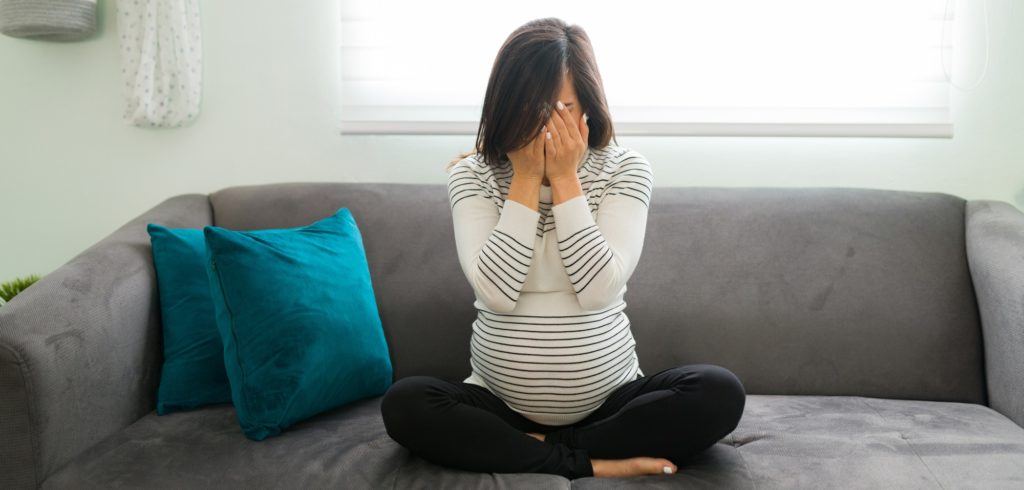
New research from the CHILD Cohort Study has found that common chemicals found in house dust may contribute to increased anxiety among moms in late pregnancy and with newborns.
The chemicals in question are organophosphate ester flame retardants and plasticizers (OPEs). For fire safety purposes, they are a common component of building materials. They are also used in many other household consumer goods including furniture, textiles, and cosmetic and baby products.
“Because of their similarity to certain pesticides, there has long been concern that these chemicals might affect the nervous system,” comments senior author Dr. Jeff Brook of the University of Toronto’s Dalla Lana School of Public Health.
“Various studies using animal models have supported this association, and some observational studies have suggested these chemicals may influence the nervous system of children. We set out to determine if OPEs might also affect the mental health of mothers during pregnancy and after giving birth—a time of volatile change in women’s bodies—potentially contributing to postpartum anxiety or depression.”
Published in Environmental Research, the study found that moms living in homes with higher levels of OPEs in house dust experienced higher levels of stress during pregnancy and in the first months after giving birth, compared to moms in homes with lower levels of OPEs. The researchers also observed a minor difference in levels of depression among these moms.
The study used data from 718 CHILD participants. The researchers assessed the presence of OPEs by analyzing house dust that was collected from the participants’ homes three to four months after the mothers gave birth. The mental health of the mothers was measured based on questionnaire responses provided by those moms at two timepoints during pregnancy, and at two timepoints in the first year after giving birth.
“Our results suggest that exposure to organophosphate ester flame retardants and plasticizers in house dust is associated with a small increase in maternal stress during the prenatal and postpartum periods,” comments lead author Dr. Stephanie Foster, a postdoctoral scholar at Oregon State University.
“This effect appeared to be strongest immediately preceding birth (at 36 weeks gestation), and to diminish gradually after birth. While associations with depression were not statistically significant, our study suggests that higher OPE exposure may be related to a small increase in depression score.”
The dust was collected as part of comprehensive home assessments led by co-author Dr. Tim Takaro of Simon Fraser University, which analyzed exposure to dust, mould, furry pets, chemicals and cleaning products, cooking emissions, second-hand smoke, and traffic-related air pollution. These assessments, not commonly done as part of birth cohorts like CHILD, have already led to important findings about other household chemicals like phthalates, and about how the presence of furry pets influences allergy risk.
“There is mounting evidence of OPE effects on children’s neurocognitive health, yet their effects on maternal mental health have largely been overlooked,” states Dr. Takaro. “Given the prevalence of prenatal and postpartum anxiety and the ubiquity of OPE exposures, we believe further research on this topic would be very worthwhile.”
See the Key Discovery resources for this research
